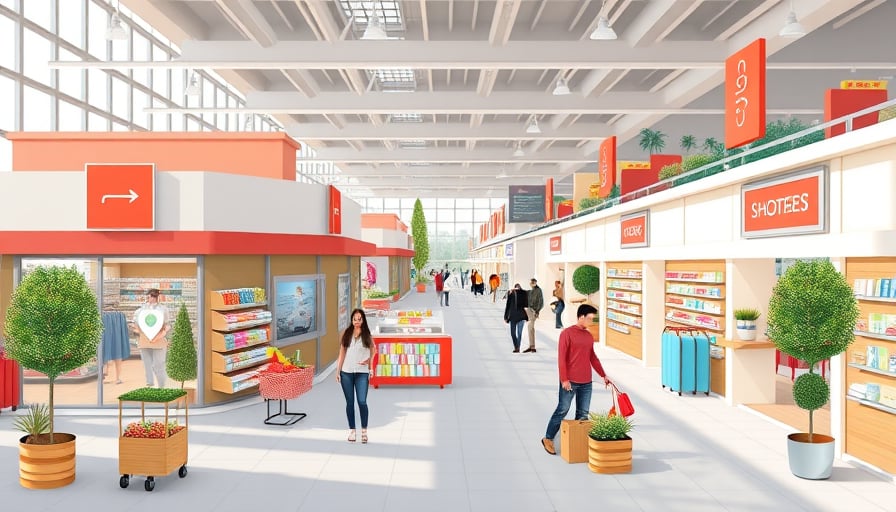Corporate News
Target Corporation has recently reported a moderately bullish trajectory, reflected in a noticeable rise in its share price. In addition to the market performance, the retailer has unveiled several strategic initiatives that underscore its commitment to blending digital innovation with the physical shopping experience. These developments are not only reshaping Target’s retail footprint but also signal broader market trends that link lifestyle shifts, demographic dynamics, and cultural movements to tangible business opportunities.
1. Strategic Partnerships Redefining the In‑Store Experience
Target’s collaboration with Loop, a Belgian ear‑plugs brand, marks the first time Loop has entered the United States’ traditional brick‑and‑mortem channel. By positioning Loop products in over 600 Target stores, the retailer taps into a growing consumer segment that prioritizes personal well‑being, sensory comfort, and sustainable wellness products.
- Lifestyle Trend: The global wellness economy is projected to reach US$5.5 trillion by 2030. A significant portion of this growth is driven by younger consumers (Millennials and Gen Z) who actively seek products that enhance mental health and reduce environmental impact.
- Retail Opportunity: Introducing premium health‑related accessories within a mainstream retailer widens the customer base, encourages cross‑category sales, and creates an experiential point that differentiates Target from e‑commerce competitors.
2. Expanding Physical Footprint Amid Digital Growth
Target’s plan to open a mega‑store in metro Atlanta—spanning an area equivalent to two football fields—demonstrates the retailer’s confidence in the continued relevance of physical commerce. While e‑commerce growth has accelerated, studies indicate that 58 % of consumers still prefer to experience products in person before purchasing, especially for apparel, home goods, and electronics.
- Demographic Shift: Atlanta’s population is projected to grow by 12% over the next decade, with a strong influx of young professionals and families. The new store’s size and diverse product mix position Target to capture this burgeoning market.
- Digital‑Physical Symbiosis: The new location will serve as a hub for click‑and‑collect, same‑day delivery, and in‑store digital kiosks. This hybrid model addresses consumer expectations for speed and convenience while retaining the tactile benefits of physical shopping.
3. Capitalizing on Generational Spending Patterns
Target’s recent stock performance and analyst upgrades reflect confidence that its portfolio alignment with Generation Z and Millennials’ purchasing habits is paying dividends.
| Generational Cohort | Key Spending Drivers | Target’s Alignment |
|---|---|---|
| Gen Z (1997‑2012) | Experiential purchases, sustainability, digital integration | In‑store tech, eco‑friendly product lines, partnerships with niche brands |
| Millennials (1981‑1996) | Convenience, quality, brand authenticity | Loyalty programs, omnichannel service, curated private‑label offerings |
| Gen X (1965‑1980) | Home improvement, wellness, value for money | Home goods expansions, wellness collaborations (e.g., Loop) |
The inclusion of Loop directly addresses Gen Z’s focus on mental wellness, while the mega‑store’s design anticipates Millennials’ desire for a curated, immersive shopping environment that complements their online habits.
4. Cultural Movements Shaping Consumer Experience
Cultural currents such as “slow retail,” community‑centric shopping, and digital minimalism are reshaping the consumer journey. Target’s initiatives resonate with these themes:
- Community Engagement: The Atlanta store will incorporate local art installations and pop‑up events, fostering a sense of belonging that appeals to socially conscious shoppers.
- Digital Minimalism: By integrating smart‑shopping assistants and streamlined checkout processes, Target reduces friction and aligns with consumers’ desire for quick, hassle‑free experiences.
- Sustainability Narrative: The Loop partnership reinforces Target’s commitment to environmentally responsible practices, a core value for the brand’s younger audiences.
5. Forward‑Looking Analysis: Market Implications
Retail Footprint as a Competitive Edge
- The mega‑store’s scale offers an experiential laboratory where Target can test new formats—such as modular pop‑ups and AI‑driven inventory—before rolling them out nationwide.
Ecosystem Expansion via Partnerships
- Collaborations with niche, lifestyle‑focused brands like Loop create a multiplier effect: increased foot traffic, higher basket values, and enhanced brand perception.
Data‑Driven Personalization
- The physical store’s digital integrations generate rich consumer data, enabling hyper‑personalized marketing that boosts retention and lifetime value.
Resilience to Market Volatility
- A diversified channel strategy—combining online, mobile, and expansive physical presence—insulates Target from disruptions, such as supply‑chain bottlenecks or sudden shifts in consumer behavior.
Bottom Line
Target’s recent bullish stock movement, coupled with strategic initiatives that merge lifestyle trends, generational preferences, and cultural shifts, positions the retailer at the nexus of digital transformation and physical retail evolution. As demographic segments continue to prioritize convenience, sustainability, and experiential quality, Target’s proactive approach offers a compelling blueprint for translating societal changes into profitable market opportunities.
